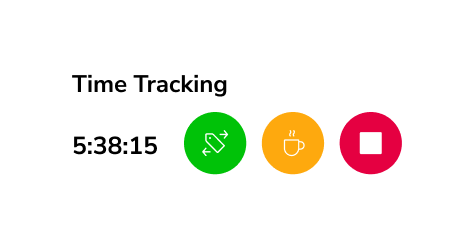From managing multi-location teams to handling complex rotations or keeping restaurant staff on track, the right employee scheduling software can save hours of administrative work each week.
I’ve tested the best employee scheduling software on the market to find out which ones actually make life easier for managers and teams.
From drag-and-drop shift planning to automated notifications and time-off tracking, these tools take the headache out of scheduling and help you stay organized without spending hours juggling spreadsheets.
The definitive list:
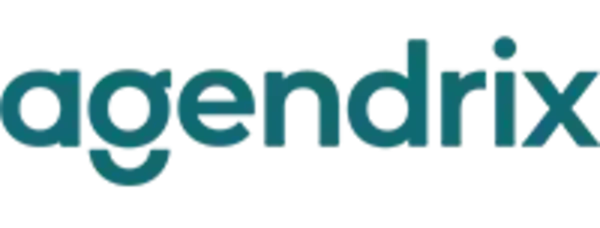

- Easy-to-create schedules
- Custom support is easily accessible
- Detailed attendance reporting
- Can automatically assign work shifts
- Limited integrations
- System cannot record multiple breaks during a single shift
- Tricky to assign custom time tracking policies for remote employees
Agendrix is a clean, modern employee scheduling software that makes shift management simple, especially for growing businesses with shift-based teams.
I liked how intuitive the employee scheduler felt right out of the box. The drag-and-drop interface, multi-select editing, and smart filters make building and adjusting schedules easy. When you’re planning shifts for multiple teams or locations, having all that information upfront saves a surprising amount of time.
Agendrix’s automated shift-assignment helps cut down manual work by filling schedules based on availability and approved leave, and the built-in time-off system keeps requests organized.
Once you approve something, it’s added to the schedule instantly, and notifications keep everyone updated. Features like “shift seen” confirmations are small but genuinely useful for avoiding miscommunication.
Agendrix also handles multi-location scheduling well. You can give different managers access to specific departments, collaborate on schedules in real time, and use open shifts to quickly fill gaps when people are unavailable.
However, Agendrix is not without its limitations. The software’s integrations are somewhat limited, and users have reported difficulty when it comes to tracking multiple employee breaks during a single shift or setting custom time tracking policies for remote employees.

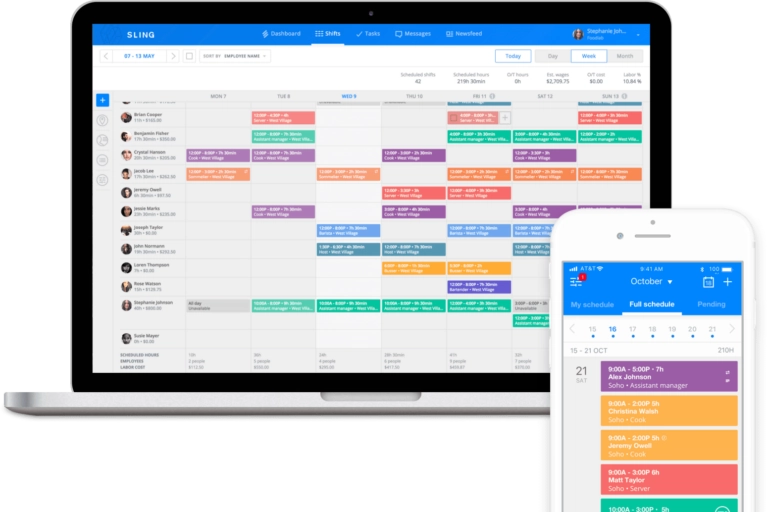
- Built-in labor budget tracking tools
- Customizable filters to view specific schedules
- Easy to set up and add bulk schedule entries
- Individual shift-swapping
- Advanced reporting feature upgrade is pricey
- Mobile app can spam with notifications of schedule changes
- Sharing task lists with team is not easy
Sling is another employee scheduling app that simplifies schedule creation and management for teams in multiple locations or with rotating shifts.
You can use it to create shifts, manage time-off requests, and handle last-minute shift changes.
After testing out Sling I found it pretty easy to build schedules. The drag-and-drop scheduler works smoothly, and the color-coded layout makes it simple to see who’s working when. The auto-scheduling feature is also a cool feature, automatically assigning shifts based on employee roles, availability, and even labor laws.
Sling does a great job at minimizing scheduling conflicts, helps manage overtime, and even lets employees swap shifts or bid on open ones. Notifications keep everyone updated, reducing no-shows and last-minute confusion.
Sling also integrates with common tools like Shopify, Square, Gusto, and Toast, making it easier to combine scheduling with payroll or point-of-sale systems.
While Sling’s core scheduling features are intuitive, advanced reporting requires a paid upgrade, which can be a drawback for budget-conscious teams. Also, users report that the mobile app can sometimes send too many notifications when schedules are changed or updated, and sharing task lists isn’t seamless as it should be.


- Support staff is fast at resolving issues
- Very easy to use
- Customizable payroll policies
- The admin interface can feel a bit overwhelming for non-technical users
- Setup for certain features can present a learning curve
TimeTrex is a powerful employee scheduling and time-tracking platform built for businesses that need more than just a basic shift planner.
Whether you’re managing a small crew or coordinating rotations for a team of 200, the platform adapts to handle everything from simple recurring schedules to complex, multi-week rotations, and it does so with impressive flexibility. The drag-and-drop interface and reusable shift templates help streamline schedule creation, especially for recurring patterns.
I love how you can automate shift creation, build schedule templates, and even let employees submit their own availability and time-off requests directly through the system. That bottom-up scheduling approach helps reduce back-and-forth and gives staff more control over their schedules.
Another strong point is the reporting. TimeTrex offers detailed, customizable reports that you can sort, save, and share with ease. TimeTrex also helps maintain compliance with labor laws, which is invaluable for avoiding scheduling violations or costly penalties.
That said, the setup process isn’t exactly plug-and-play. Getting all the modules configured, from employee data to overtime rules, can be confusing at first. The interface also feels a bit cluttered, which might slow down new users until they get used to it.
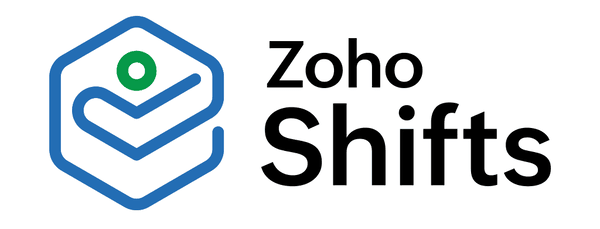

- Simple platform to use
- Dashboard makes it easy to analyze shift data
- Great for team collaboration
- Limited offline uses
- Lacks report customizations
- Lacks integrations
Zoho Shifts is a user-friendly scheduling tool that that makes managing multiple rosters across departments and locations much easier with team collaboration.
Employees can swap or offer shifts to qualified coworkers, and automated notifications keep everyone updated on changes. Viewing workforce availability across multiple sites is seamless, which helps ensure each location is properly staffed and reduces scheduling conflicts. The software sends instant notifications and automated reminders, so employees are always aware of upcoming shifts or changes.
All employee hours, overtime, and time-off requests are tracked in one central location, making approvals straightforward.
The software also allows managers to set custom roles and permissions, which adds a layer of security and ensures the right people have access to scheduling controls.
But, while Zoho Shifts is intuitive to use, it has some limitations. For starters, it has limited offline functionality, which is not ideal for teams working in settings without a good internet connection.
Also, the software’s reporting options are basic, and integrations with other tools are limited.
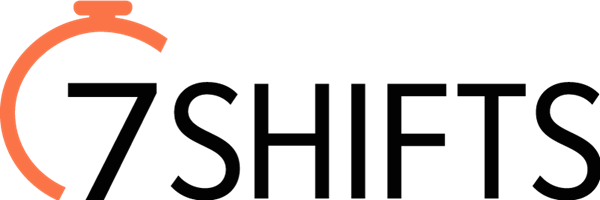

- Makes it easy to make shift swaps
- Very user friendly
- Easy staff onboarding
- Glitches that log users out
- Long loading times
- Future schedules can be hard to follow
7shifts is a feature-rich scheduling and workforce management tool built specifically for restaurants and hospitality teams and after using it, I can see why it’s popular in this space.
The platform makes scheduling fast and flexible, with drag-and-drop tools, shift templates, and visibility into employee availability so you can create conflict-free schedules
Employees can submit time-off requests, swap shifts, or pick up open shifts directly in the app, reducing back-and-forth communication and no-shows.
One of the standout features is its integration with labor and sales data. This allows managers to forecast staffing needs, stay compliant with labor laws, and optimize labor costs based on actual restaurant trends rather than guesswork.
The platform also offers built-in time clocking, payroll, and tip management which make it a complete hub for daily operations.
That said, the multiple dashboards can feel a bit scattered, and the Android app occasionally crashes or logs users out, which is not ideal during a busy shift. Also, users report that future schedules can be hard to follow.



